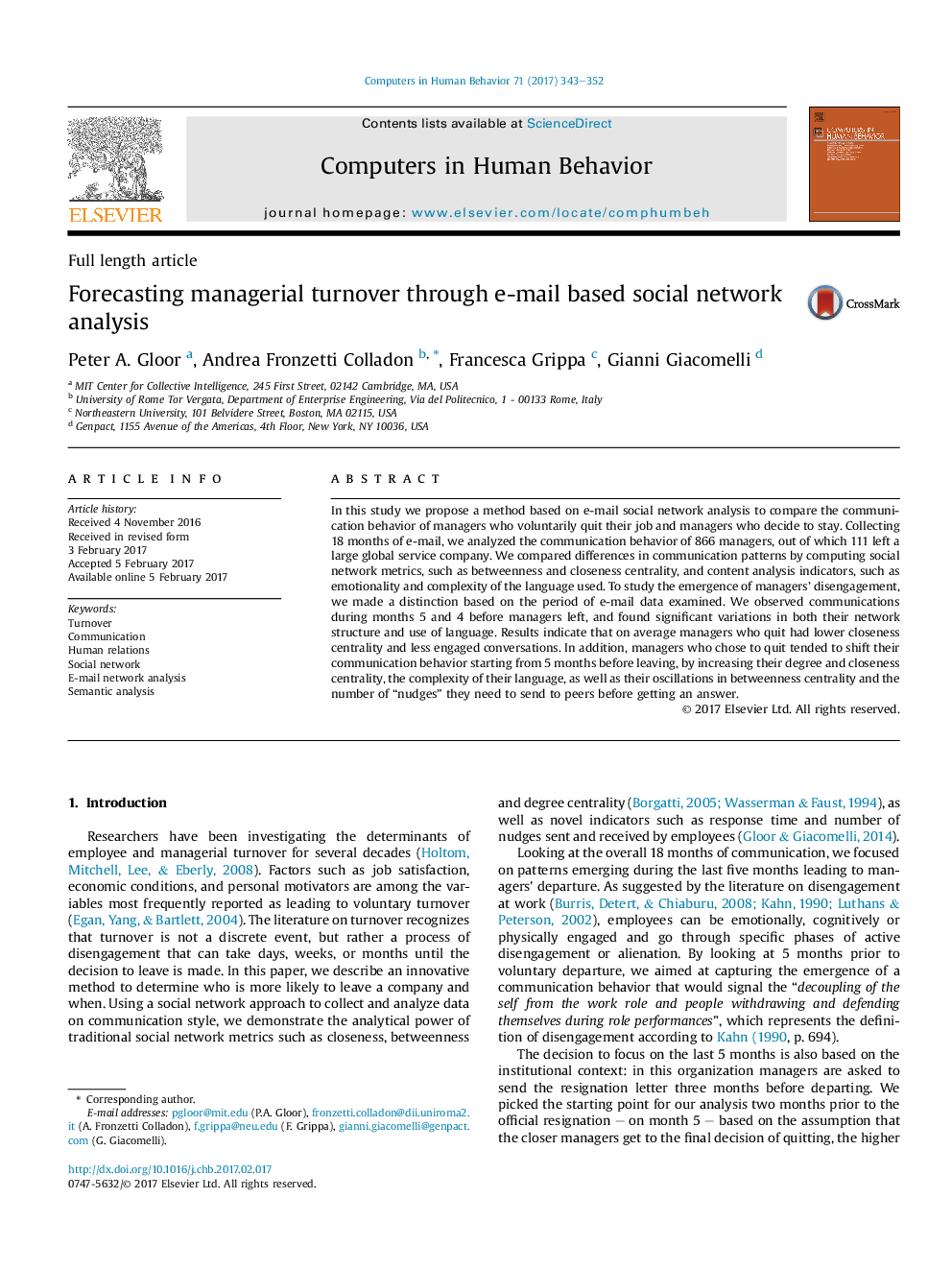| Article ID | Journal | Published Year | Pages | File Type |
|---|---|---|---|---|
| 4937368 | Computers in Human Behavior | 2017 | 10 Pages |
Abstract
In this study we propose a method based on e-mail social network analysis to compare the communication behavior of managers who voluntarily quit their job and managers who decide to stay. Collecting 18 months of e-mail, we analyzed the communication behavior of 866 managers, out of which 111 left a large global service company. We compared differences in communication patterns by computing social network metrics, such as betweenness and closeness centrality, and content analysis indicators, such as emotionality and complexity of the language used. To study the emergence of managers' disengagement, we made a distinction based on the period of e-mail data examined. We observed communications during months 5 and 4 before managers left, and found significant variations in both their network structure and use of language. Results indicate that on average managers who quit had lower closeness centrality and less engaged conversations. In addition, managers who chose to quit tended to shift their communication behavior starting from 5 months before leaving, by increasing their degree and closeness centrality, the complexity of their language, as well as their oscillations in betweenness centrality and the number of “nudges” they need to send to peers before getting an answer.
Related Topics
Physical Sciences and Engineering
Computer Science
Computer Science Applications
Authors
Peter A. Gloor, Andrea Fronzetti Colladon, Francesca Grippa, Gianni Giacomelli,
